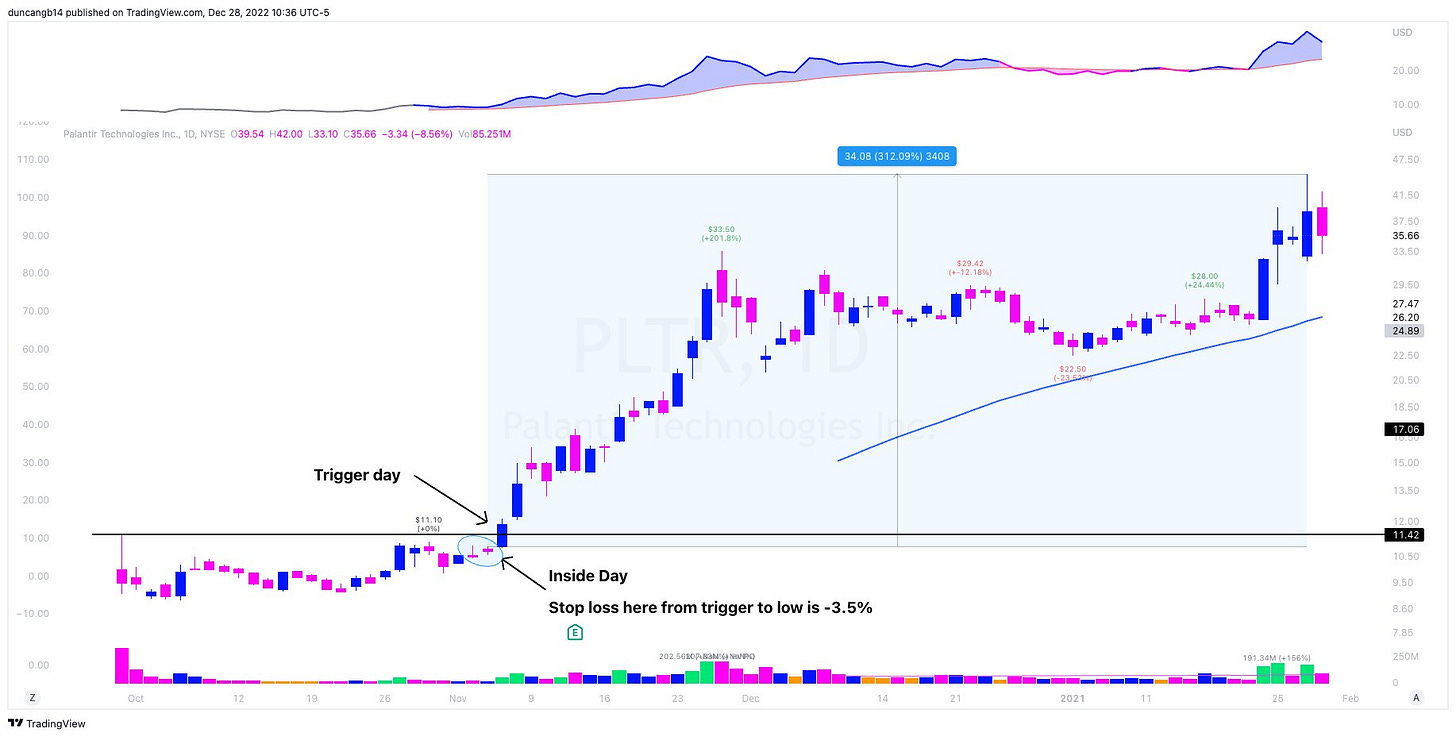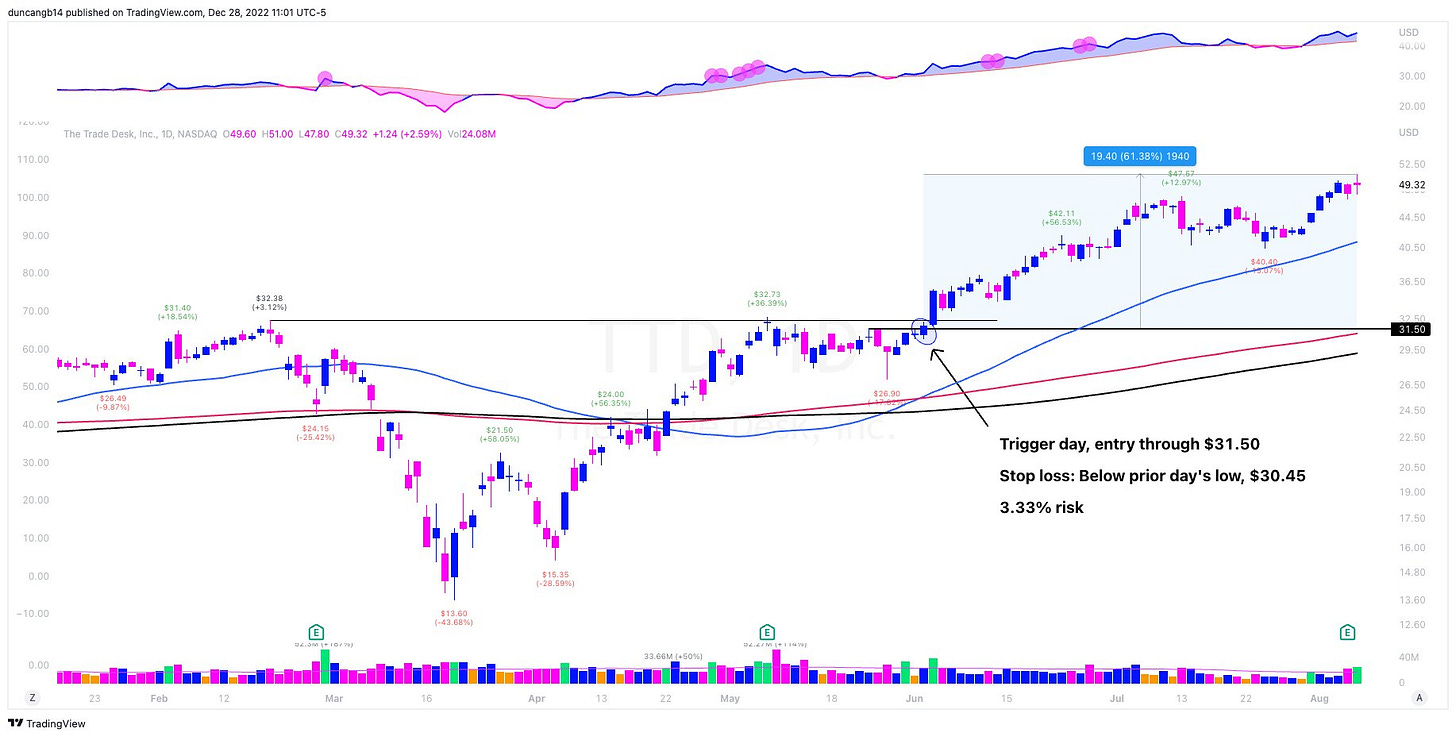A 3 Step Guide To Position Sizing For The Novice Trader
A method to find consistency in your position sizing.
One of the most complex topics in the market is position sizing. It’s a concept that took me years to figure out, and one that I’m still tinkering with as I gain experience. There are a ton of different ways of going about it, and one way that works for someone else may not work for you based on your risk profile.
One of the easiest and most repeatable ways I’ve learned to position size over the years follows this simple, step-by-step process:
Step 1: Define How Much Of Your Account You’re Willing To Risk Per Trade ($ & %)
The most important piece behind proper risk management or position sizing is centered around your ability to define how much you are going to lose on any given trade (assuming you don’t get gapped against premarket or after-hours).
Personally, I never risk more than 1% of my account equity on any given trade (and this is only during periods in which the market is hot!). This allows me to withstand multi-trade losing streaks, giving back just fractions of my account. So, for example, if I had a $100,000 account I would only be risking $1,000 per trade at the top end of my risk.
I’ve read stories of some successful traders who risk 2-3% of their capital on their best setups and see some massive upside gains as a result. I’ve never felt the need to do this and am comfortable risking 0.5-1.0% of my equity knowing that I will still make progress if I trade well.
What I want to iterate here is that the first step in this process is completely up to you — only you can dictate how much risk you can tolerate.
Step 2: Look For Logical Entry/Exit Points That Are Within 5% of Each Other
The traditional CANSLIM trader is taught to look for logical stop losses in the 7-8% range, but I would say most money managers following CANSLIM have trimmed down their % stops by a couple of basis points. Legendary trader Jim Roppel even has a 3-4-5% rule taped to his desk, clearly reminding him of where he should be cutting his losses.
But how does this relate to position sizing? Let’s revisit step 1, where we decided that we were not going to risk any more than 1% of our account on a single trade. Now, knowing this, and then adding in our second step of looking for logical entry/exits within 5% of eachother, we can use a simple formula to decide how much equity we are going to position size with in a particular trade.
Step 3: Position Size Using The Following Formulas
Position Size = 100% ÷ Trade Stop Loss (%)
So, if your stop loss is 4%, here’s the math:
100% equity ÷ 4% stop loss = 25% equity position size (assuming 1% equity risk)
This means if I buy a stock & have a 4% stop loss, I can put a 25% equity position on & still be risking 1% of my equity. Your account will thank you w/ 20% of your portfolio in a stock that goes up 25-30%.
Here’s another hypothetical calculation (assuming 25k portfolio size):
$25,000 x 1% equity risk = $250 at risk
Entry: $100
Stop Loss: $95 (5% risk, $5 a share)
$250 total risk allowed ÷ $5 a share = 50 shares allowed to purchase
50 shares x $100 entry point = $5,000 cost of position, or 20% equity.
Step 4: Implement These Rules on Historical Examples
One of the only ways to improve as a trader is to study 100s of examples pertaining to the pattern you want to master. Position sizing is no different. Let’s run through a legit example using PLTR:
Entry: $10.92
Stop Loss: $10.53
Total risk on position = 3.5%
100% / 3.5% Stop Loss = 28.5% equity position
This means you could have bought a 28.5% equity position in $PLTR on breakout day and still have only risked 1% of your equity using the first formula outlined above.
It would go on to gain 312% before topping out, which would have been equivalent to an 85% gain *on your account* just from one stock. This is the power of Position Sizing based on Risk.
Here’s another example using $TTD:
Entry: $31.50
Exit: $30.50
Total risk on position = 3.33% , which would mean a 30% position size would keep you within your 1% equity risk allowance. Potential *account gain* based on the timeframe below was ~18%.
Not only are you position sizing with some serious equity and managing risk at the same time, but you are also building CONSISTENCY in the way you operate in the market. At the end of the day, this is the major goal. Over time your consistency will beat out 99% of other traders.
Other Pieces of Position Sizing To Consider:
There will be instances in which your stop loss will be < 2% (rare but it happens), & you will have the opportunity to size a position upwards of 50% of your equity. Even rarer are the <1% stop loss opportunities, where you can size a position upwards of 100% of your account. These trades are definitely harder to handle but it shows the beautiful combination of large position sizes & proper risk management.
There will be times when gap downs occur, below your planned stop loss area, and your position size is large. You have to account for these instances when you're sizing using this method and plan for the "what if's".
This method really only works when we are in a sustained uptrend. I see no need to size anything greater than 12.5% of my equity during bear markets or corrections. You must always make sure the market wind is at your back.
You have to find what works best for you. If you know you can't emotionally handle a 35% position size, DON'T SIZE UP even if you're within your risk allowance. Always sell down to the sleeping point and know your personality as a trader.
I hope you’ve had a great week.
Talk soon,
Greg
2020 Best Charts: https://gregduncan.gumroad.com/l/wmfsd
2021 Best Charts: https://gregduncan.gumroad.com/l/2021
2022 Best Charts: https://gregduncan.gumroad.com/l/2022
Earnings Gap Up Mastery Free Email Course: https://upsideunlimited.com/earnings-gap-course
Consider Becoming A Paid Upside Unlimited Subscriber: https://upsideunlimited.com/sub




Glad you're back. Missed your posts.